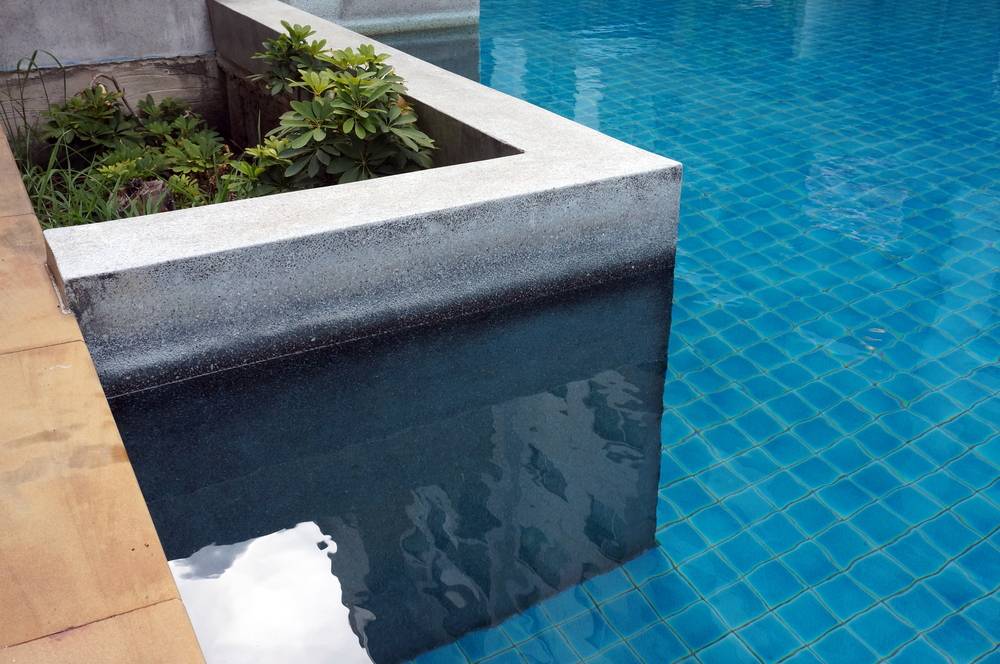Cya high
- Thread starter Jen102100
- Start date
You are using an out of date browser. It may not display this or other websites correctly.
You should upgrade or use an alternative browser.
You should upgrade or use an alternative browser.
Started to drain pool to dilute it but this it what my plaster looks like. Can it be from the high levels
- Jul 21, 2013
- 65,689
- Pool Size
- 35000
- Surface
- Plaster
- Chlorine
- Salt Water Generator
- SWG Type
- Pentair Intellichlor IC-60
Your CYA is likely higher, but that is about as high as a Pool Store test machine can go.
You need to get your own test kit. Taylor K-2006C or TFT Test Kits
Test Kits Compared
We cannot do much with pool store tests as they are too inaccurate.

 www.troublefreepool.com
www.troublefreepool.com
You need to get your own test kit. Taylor K-2006C or TFT Test Kits
Test Kits Compared
We cannot do much with pool store tests as they are too inaccurate.

Pool Care Basics Archives
Your one-stop shop for all things TFP to include: ABCs of Water Chemistry, Recommended Chemicals/Levels, Test Kits, Troubleshooting, and much more!
- Jul 21, 2013
- 65,689
- Pool Size
- 35000
- Surface
- Plaster
- Chlorine
- Salt Water Generator
- SWG Type
- Pentair Intellichlor IC-60
You need to get your water chemistry under control, then you can work on stains in your pool...Started to drain pool to dilute it but this it what my plaster looks like. Can it be from the high levels

Stains in Your Pool
The stained pool is beyond embarrassing. Our in-depth Guide to remove stains in your pool will help you to remove the stains and prevent them in the future.
Could that be why it looks like thatYour CYA is likely higher, but that is about as high as a Pool Store test machine can go.
You need to get your own test kit. Taylor K-2006C or TFT Test Kits
Test Kits Compared
We cannot do much with pool store tests as they are too inaccurate.

Pool Care Basics Archives
Your one-stop shop for all things TFP to include: ABCs of Water Chemistry, Recommended Chemicals/Levels, Test Kits, Troubleshooting, and much more!www.troublefreepool.com
- Jul 21, 2013
- 65,689
- Pool Size
- 35000
- Surface
- Plaster
- Chlorine
- Salt Water Generator
- SWG Type
- Pentair Intellichlor IC-60
Not from high CYA.Could that be why it looks like that
Could be organic from lack of chlorine or metals staining.
You need a proper test kit. I suggest the TF-100/Pro or Taylor K2006C. A proper test kit is needed to get the accurate water chemistry results needed to follow the TFP protocols.
Once you get your test kit, run a full set of tests and post them here.
Plaster erosion is normally due to low CH, low TA, low pH, and / or the use of granulated acidic products in the area of erosion.
Make sure you have the right test kit now and start testing your own water - either a TF-100 or Taylor K-2006C (link below). That's going to be a must for a happy swim season.
Are you just going to keep posting the same problem every year and ignore the advice?
We are wasting our time if you are not going to get a good test kit and begin to follow the recommendations.
 www.troublefreepool.com
www.troublefreepool.com
We are wasting our time if you are not going to get a good test kit and begin to follow the recommendations.
Spots on pool
Does anyone know what this is??? Seems like rough holes in my plasterp
How about some historical test results so that we can see where the chemistry has been?
A current set of numbers is only a snapshot and it does not give us a history.
Get a good test kit and post the results and we can possibly help if you are willing to follow the recommendations.
Pool Care Basics
Overnight Chlorine Loss Test
SLAM Process
PoolMath
FC/CYA Levels
Test Kits Compared
A current set of numbers is only a snapshot and it does not give us a history.
Get a good test kit and post the results and we can possibly help if you are willing to follow the recommendations.
Pool Care Basics
Overnight Chlorine Loss Test
SLAM Process
PoolMath
FC/CYA Levels
Test Kits Compared
Is that considered etching? Can it be fixed with balancing the chemicals. It feels like it needs to be sandedNot from high CYA.
Could be organic from lack of chlorine or metals staining.
wow! Pretty friggin rudeAre you just going to keep posting the same problem every year and ignore the advice?
We are wasting our time if you are not going to get a good test kit and begin to follow the recommendations.
Spots on pool
Does anyone know what this is??? Seems like rough holes in my plasterpwww.troublefreepool.com
- Jul 21, 2013
- 65,689
- Pool Size
- 35000
- Surface
- Plaster
- Chlorine
- Salt Water Generator
- SWG Type
- Pentair Intellichlor IC-60
Is that considered etching?
I doubt it.
Can it be fixed with balancing the chemicals.
You have to identify the stain first to know.
Stain ID Kit | Jacks Magic
It feels like it needs to be sanded
That is always an option.
Plaster Installation and Maintenance - Further Reading
Sorry, not trying to be rude, but you keep ignoring the advice that people give and keep posting the same issue.
People are genuinely trying to help, but we can't if you don't want to provide the necessary information.
People are genuinely trying to help, but we can't if you don't want to provide the necessary information.
You are asking us to diagnose the plaster problem with no reliable chemistry information.
Not really a realistic expectation.
If you had just joined, that would be a completely different story.
However, after 7 years and multiple recommendations to get a good test kit, you should be well aware of how important good test results are.
Not really a realistic expectation.
If you had just joined, that would be a completely different story.
However, after 7 years and multiple recommendations to get a good test kit, you should be well aware of how important good test results are.
Some of the spots look like what is referred to as "spot etching", which is generally attributed to the quality of the plaster product or application by some people, but there are some people who blame it on the chemistry.
We would need reliable data on the chemistry from the initial fill to now to really be able to assess what caused the problem.
As far as I can tell, the chemistry is not maintained properly or regularly.
It looks like some copper stains, which can come from a heater corroding from bad chemistry or maybe algaecide or maybe mineral systems.
We would need reliable data on the chemistry from the initial fill to now to really be able to assess what caused the problem.
As far as I can tell, the chemistry is not maintained properly or regularly.
It looks like some copper stains, which can come from a heater corroding from bad chemistry or maybe algaecide or maybe mineral systems.
Pool plaster- less than 2 years old. Spot etching?
Hello! July 2018 we had our pool plaster redone. We are in PA so enjoyed beautifully perfect plaster for less than 2 months before having to close for winter. When we got the new plaster, we followed instructions to the T- had water trucked in, we tested and balanced diligently with the LSI...
The Best Plaster Pool Startup
Additional clarifications on the Bicarb (or Positive CSI) Startup. THE BEST PLASTER POOL START UP How a startup program deals with and prevents the detrimental process of “plaster dust” forming in newly plaster pools is the key in helping to preserve a quality plaster finish that will last 20+...
Ten Guidelines for Quality Pool Plaster
There are proper steps to follow for the making of durable pool plaster. There are also improper practices that can lead to early deterioration or discoloration. Following is a ten-point checklist that will help achieve a lasting and discoloration free plaster. 1. The best cement/aggregate...
White Spotting of New Plaster Pools
The problem of plaster spotting has been an ongoing puzzle and controversy in the swimming pool industry for over three decades. The generally round, smooth-yet-unsightly white soft spots in new plaster pools have long been a source of contention among pool plasterers, and pool chemical service...
Scientific Evidence on Plaster Spotting
The following information provides pictures and scientific evidence from the cement petrographers who performed “failure analysis” examinations on white spotted pool plaster cores. The first picture (above) is of a plaster core from the pool that had suffered from white spotting. Note the...
White spots
I wasn't sure which category to post this in as I do not believe this is an algae problem. In February I had my pool resurfaced with Quartzscape in French Gray. On both the floor and walls I have these white spots/blotches cover a high percentage of the pool area. I have scrubbed them but...
Similar threads
- Replies
- 4
- Views
- 254
- Replies
- 3
- Views
- 109
- Replies
- 10
- Views
- 151
- Replies
- 5
- Views
- 140
- Replies
- 7
- Views
- 104

